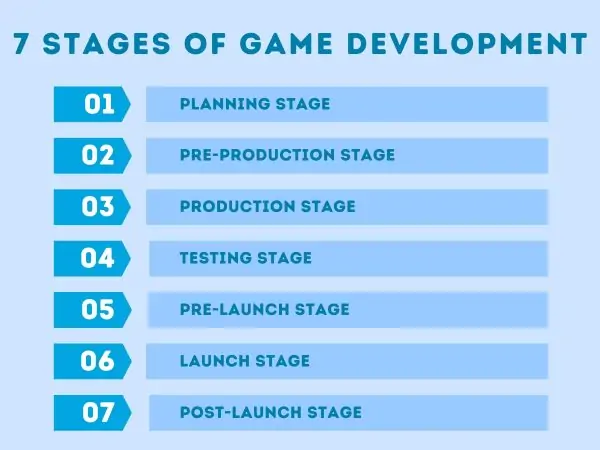In this guide, we will explore the various stages of game development, from the initial planning phase to the post-launch stage. Understanding these stages is crucial for anyone interested in creating their own games or pursuing a career in game development.
Planning Stage
The planning stage is where the game concept is born. Developers brainstorm ideas, define the game’s objectives, and outline the gameplay mechanics. This stage involves market research, target audience analysis, and setting project goals.
Key Questions
- What’s the game about?
- Who’s the target audience?
- What platform will it be on?
- How long will development take?
- What’s the budget?
- How will we measure success?
Pre-production Stage
During the pre-production stage, developers focus on fleshing out the game concept further. This includes creating concept art, designing characters and environments, and drafting the storyline. Additionally, developers create a detailed game design document outlining all aspects of the game.
Production Stage
The production stage is where the actual development work begins. Programmers, artists, and designers collaborate to build the game according to the specifications outlined in the game design document. This stage involves coding, asset creation, and level design.
Key Activities
- Writing code
- Designing levels
- Creating characters and animations
- Recording sound effects
- Testing gameplay mechanics
- Iterating based on feedback
Testing Stage
Once the game is developed, it undergoes rigorous testing to identify and fix any bugs or issues. Quality assurance testers play the game extensively to ensure it meets quality standards and delivers a smooth gaming experience. Feedback from testing is used to make necessary improvements.
Types of Testing
- Functional testing
- Performance testing
- Usability testing
- Compatibility testing
- Beta testing with real players
Pre-launch Stage
In the pre-launch stage, developers focus on marketing and promotion strategies to build anticipation for the game’s release. This involves creating promotional materials, reaching out to influencers and media outlets, and generating buzz on social media platforms.
Launch Stage
The launch stage is where the game is released to the public. Developers coordinate with distribution platforms to make the game available for purchase or download. Launch day is critical, and developers closely monitor feedback and reviews to address any issues promptly.
Strategies
- Double-checking for bugs
- Optimizing performance
- Generating buzz on social media
- Hosting launch events or livestreams
- Monitoring player feedback and addressing issues quickly
Post-launch Stage
After the game is launched, developers continue to support it with updates, patches, and additional content. They also engage with the community through forums, social media, and customer support channels. This stage is essential for maintaining player interest and ensuring the longevity of the game.
Conclusion
In conclusion, the seven stages of game development are essential for creating a successful and engaging game. From initial planning to post-launch support, each stage plays a vital role in the development process. By understanding and strategically implementing these stages, developers can increase their chances of creating a hit game that resonates with players worldwide.
Frequently Asked Questions (FAQs)
What skills are needed for game development?
Game development requires a combination of programming, art, and design skills. Proficiency in coding languages such as C++, Unity, or Unreal Engine is essential, along with artistic abilities for creating graphics and animations.
How long does it take to develop a game?
The development timeline for a game can vary greatly depending on its complexity and scope. Simple mobile games may take a few months to develop, while large-scale AAA titles can take several years.
What is the role of a game designer?
Game designers are responsible for creating the overall concept and gameplay mechanics of a game. They design levels, characters, and game systems, and work closely with programmers and artists to bring their vision to life.
How important is playtesting in game development?
Playtesting is crucial in game development as it helps identify bugs, balance issues, and areas for improvement. Gathering feedback from players allows developers to make necessary adjustments to enhance the gaming experience.
What are some common challenges in game development?
Common challenges in game development include meeting deadlines, managing project scope, and optimizing performance across different platforms. Additionally, balancing gameplay mechanics and addressing technical issues can pose significant challenges for developers.
Join Our Community
Stay connected with us and become a part of our vibrant community on social media:
Get In Touch
Have questions, suggestions, or feedback? We’d love to hear from you! Reach out to us through our contact page.
At Universe 2.0, we provide information, tutorials, guides, etc., to grow the game industry.
Visit us at: universe-2.com

